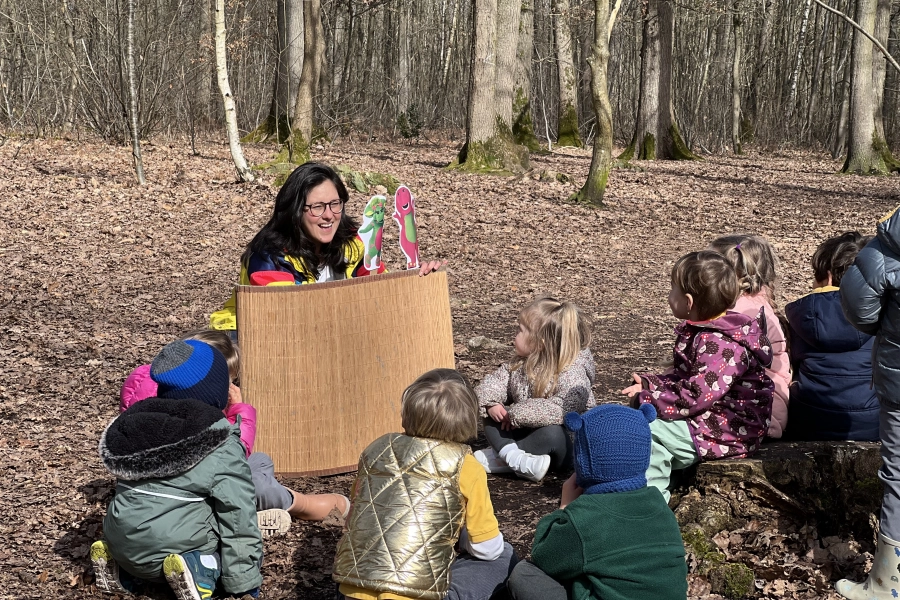


The benefits of experiential learning in the great outdoors.
The benefits of experiential learning in the great outdoors.
The Advantages of Experiential Language Learning in Outdoor Settings
As our world becomes increasingly interconnected, multilingual communication opens doors to countless opportunities. While traditional classroom settings provide a solid foundation for language learning, outdoor education offers a dynamic and enriching alternative. Exploring nature not only makes learning more engaging but also stimulates all the senses, enhancing the language acquisition process.
Immersive Learning Through Nature
Outdoor bilingual education provides a unique, immersive experience. By interacting with their environment, children can practice language skills in authentic contexts. Describing local flora and fauna or participating in group activities outdoors offers a vibrant platform for language development that surpasses conventional classroom boundaries.
Transformative Learning Environments
Learning in natural settings transforms the educational space into a stimulating and imaginative realm. The heightened sensory experiences of the outdoors—through sight, sound, and texture—spark curiosity and foster active engagement with a second language. This approach not only enhances vocabulary retention but also ties words and phrases to tangible experiences.
Sensory Engagement and Language Development
Outdoor environments stimulate all senses, which accelerates language learning. Children engage in sensory exploration—touching tree bark, listening to birdsong—which enriches their understanding of both the language and the natural world. This multisensory approach promotes cognitive development and linguistic proficiency.
Cultural Appreciation and Language Learning
Learning about local environments in a second language connects students with cultural heritage. Discovering indigenous plants and animals while learning their names in a new language deepens cultural appreciation and language understanding.
Building Communication Skills and Confidence
Outdoor activities encourage social interaction and collaboration, enhancing language skills and interpersonal abilities. Activities like nature walks and environmental projects provide practical language use in a social context, fostering teamwork and boosting confidence through real-world challenges.
Enhancing Well-being Through Outdoor Learning
Integrating outdoor activities with language learning not only supports cognitive growth but also promotes physical health and emotional well-being. Activities like hiking or gardening reduce stress and improve mood, contributing to a holistic educational experience.
Boosting Physical Activity and Focus
Outdoor language learning encourages physical movement, which improves overall health and cognitive function. The stimulating outdoor environment enhances focus, reduces distractions, and fosters a positive learning atmosphere.
Benefits of Outdoor Education
Outdoor education introduces a fresh, engaging dimension to learning. By turning natural settings into classrooms, educators create interactive environments that capture students’ attention and foster greater motivation. This approach supports physical health, emotional intelligence, and social connections, while also revitalizing teaching methods and enhancing teacher-student relationships.
Tips for Effective Outdoor Activities
To maximize the benefits of outdoor education, consider the following tips:
Emphasize Adaptability
Design activities that can be adjusted to different learning objectives, age groups, and environmental conditions. Flexibility ensures that all participants can engage meaningfully with the content.
Ensure Comfort
Prioritize comfort by providing appropriate clothing, footwear, and gear for varying weather conditions. Comfortable students are more likely to fully engage in and enjoy the learning experience.
Select Suitable Materials
Choose durable and accessible materials for outdoor activities. Well-organized resources and clear instructions enhance the effectiveness of the learning experience.
Conclusion
Harnessing the potential of outdoor settings for language learning offers numerous advantages. By integrating experiential learning with nature, educators can create vibrant, interactive environments that support language acquisition, cultural appreciation, and overall well-being. This approach equips students with the skills and confidence needed to thrive in a connected, globalized world.


